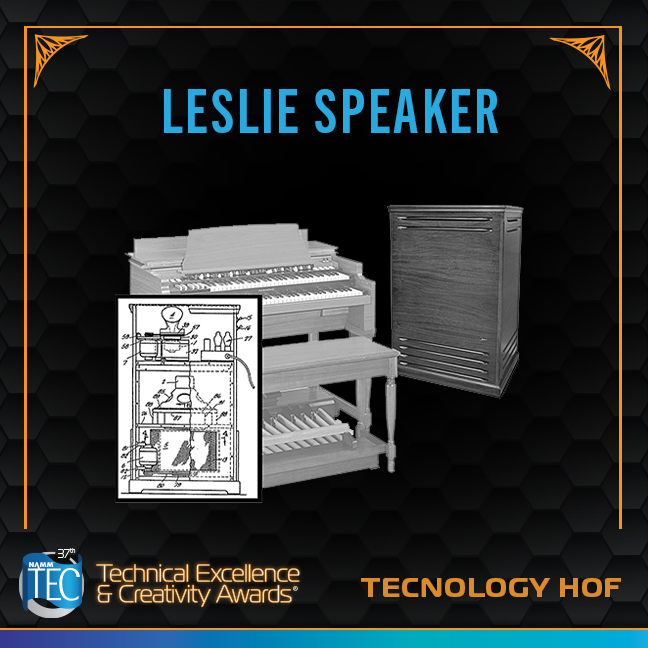Initially, the Hammond organ was intended for the church and home markets, but it was the debut of the semi-portable (meaning only 400 pounds!) model B-3 in 1954 that brought this instrument to the forefront of jazz, R&B and rock-n-roll. The B-3 was the right instrument at the right time, but its soulful versatility and great voicings (combined with Don Leslie’s rotating speaker design) that soon made the instrument a mainstay in every genre of pop music.
Originally patented as a “Rotatable Tremulant Sound Producer” (U.S. patent #2,489,653, filed on July 9, 1945), the Leslie design shown in the diagram was unlike any conventional speaker in that the output of the tweeter (#1) fed a rotating horn (#4), and the down-firing woofer (#2) fed into a rotating drum (#5). Both the treble and bass sections had slits in the otherwise-sealed enclosure and the sounds emanating from the cabinet used the Doppler effect to create a swirling sound.
Eventually the Leslie speaker was upgraded with both high and low speed rotational settings and even a brake function — all of which could be used to creative effect by both organists, and later guitarists, via a pedal controller. Today, many keyboard instruments include a simulation of the Leslie rotating speaker effect, but these pale in comparison to the original, because even today, there ain’t nothing like the real thing.

